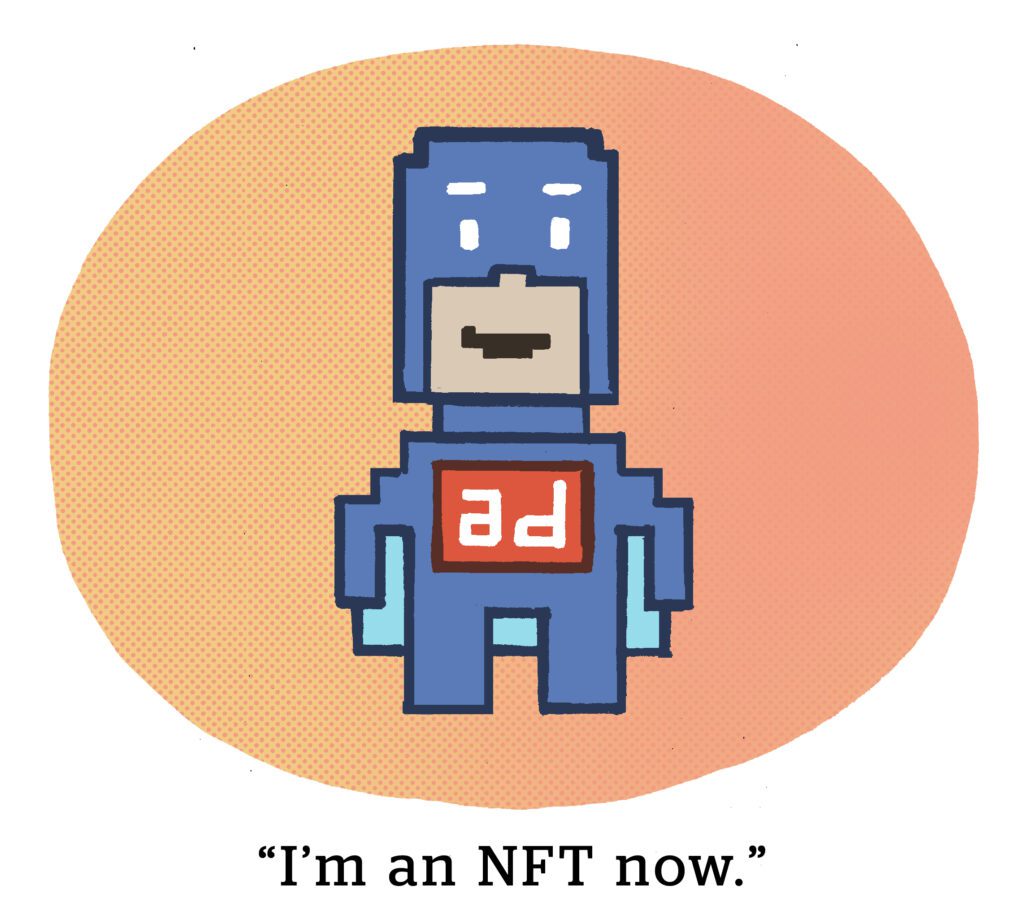Here’s today’s AdExchanger.com news round-up… Want it by email? Sign up here.
Untangling Web2 From Web3
Which Web2 social platforms are driving Web3 growth?
It turns out there’s “an interesting inversion” happening, according to a blog by Antonio García Martinez, co-founder of Web3 attribution company Spindl. Web3 companies get huge value from Twitter, whereas Google and Meta are relative nonperformers. Polygon, an Ethereum blockchain tech provider, used trackable Spindl links in posts and ads across Twitter, LinkedIn, Instagram and Telegram to map conversions for an NFT release. Twitter generated 572 “Unique Minters,” defined as people who go on to set up wallets and purchase NFTs. LinkedIn and Instagram each generated five Unique Minters, while Telegram generated a grand total of … zero.
And in terms of organic site traffic Polygon was able to connect to a social account, Twitter was responsible for more Unique Minters than Google, Facebook, YouTube and Telegram combined.
It’s worth noting, however, that a hefty portion of the overall traffic was fraud, as in bots harvesting the new NFTs to resell. Welcome to Web3. (Although, was ad tech any different?)
Of course, Twitter earns relatively little from its immense value to Web3 businesses. Google and Meta likely make more despite lackluster results.
Similarly, Twitter is a major career advancement tool but earns nothing from that, while LinkedIn makes beaucoup bucks.
Repayment Plan
Netflix’s ad-supported tier has existed for all of one month, but the streamer is already offering ad refunds.
Netflix is paying refunds because it’s fallen short of impression guarantees. Some advertisers claim Netflix has only delivered 80% of what was guaranteed in the contract.
“They don’t have enough inventory to deliver,” one Netflix advertiser tells Digiday. “So they’re literally giving the money back.”
Netflix has a “pay-on-delivery” policy that allows advertisers to recoup payments made for ads that don’t end up running (which sounds reasonable). And advertisers were quick to request refunds so they could reallocate that money during the Q4 shopping season.
Netflix’s policy differs from most TV ad commitments, which typically stipulate that if an advertiser pays for impressions that aren’t served, the broadcaster keeps the money but offers a make-good.
The failure to meet its audience commitments is the latest indication that Netflix’s ad business is off to a slower start than anticipated. Although Netflix’s ad tier launched with astronomical $65 CPMs, the price has since dropped to a $55 minimum, as reality sets in.
Still, $55 CPMs are nothing to sniff at, and as long as advertisers are willing to pay – and there’s enough ad inventory to go around – Netflix stands to make some serious revenue.
Interoperability … For Me
The Linux Foundation, Meta, Microsoft, AWS and TomTom, a Dutch company that collects location info from devices placed on car windshields, are banding together to develop an interoperable mapping platform.
“Mapping the physical environment and every community in the world, even as they grow and change, is a massively complex challenge that no one organization can manage,” says Jim Zemlin, director of the Linux Foundation, in a release.
Of course, there is one organization that already does just that: Google. This project, called the Overture Maps Foundation, is an attempt for companies not named Google to lend each other a helping hand.
To be fair, Google collaborates in other ways, including through the Android Open Source Project, an initiative created to steer the development of Android with members that include wireless carriers, handset makers, software companies and semiconductor companies.
Apple, however, is another story. For example, it doesn’t support rich communication services (RCS), which are standard messaging protocols developed by the Global System for Mobile Communications, a carrier trade group. RCS is superior to iMessage and SMS, and both Google and Meta (for WhatsApp) would love interoperability.
But Apple isn’t interested. One conspiracy theory is that Apple enjoys the brand knock against Android, since Android messages show up in iMessage as green bubbles rather than in Apple’s blue bubble.
Seriously. This is why we can’t have nice things.
But Wait, There’s More!
A TikTok ban may satisfy lawmakers – and shift the social media power balance in the process. [Bloomberg]
Brands are finding new ways to advertise in your car. [Marketing Brew]
Peacock hopes to boost subscriber numbers with its exclusive JetBlue loyalty partnership. [Ad Age]
Microsoft will roll out a “data boundary” for EU customers starting Jan. 1, as US cloud providers prepare for GDPR lawsuits. [Reuters]
You’re Hired!
Choozle hires Joe Forrester as SVP of engineering and product; Mike Rosner as SVP of sales; and Katie Harker as VP of media and client operations. [release]
SoundStack brings on Hailey Feagans as VP of marketplace operations and Heather Smith as VP of publisher enablement. [release]
Copper appoints Carrie Shaw as its new CEO. [release]
SaaS industry vet Bryan Wade joins Movable Ink as chief product officer. [release]














